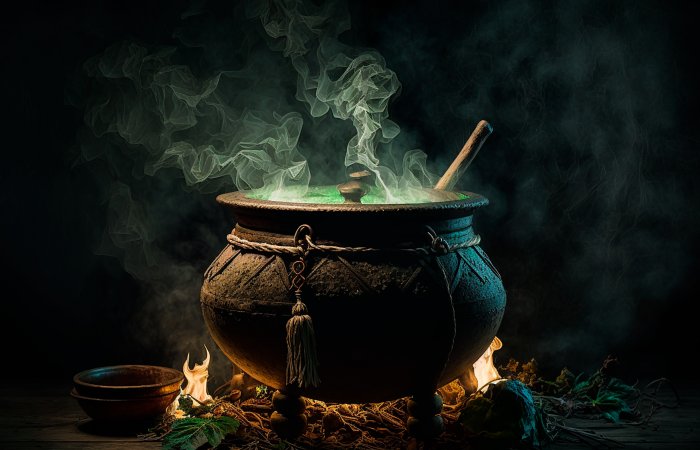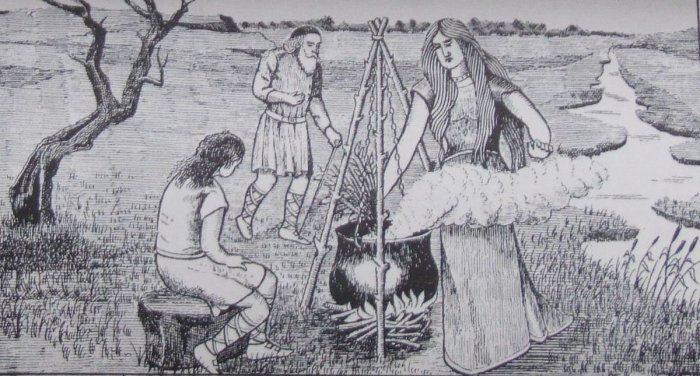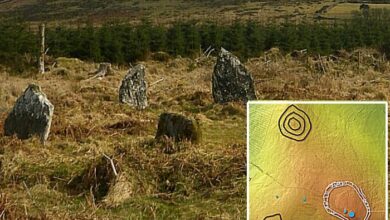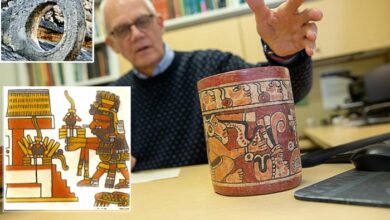Miraculous Cauldrons Of The Ancient Celtic World

A. Sutherland – AncientPages.com – The cauldron, or vessel, is a widely recognized symbol in Celtic tradition. It has existed since the earliest recorded times, as evidenced by archaeological findings, folktales, and myths of the Celtic world.
There are typically three kinds of these miraculous cauldrons or vessels: one represents abundance and food, another signifies healing and quickly restores the dead to life, and the third contains magical potions of wisdom and inspiration.
Credit: Adobe Stock – Irene
The most famous cauldrons of inspiration belonged to the witch Ceridwen. Her magical potion endowed Taliesin, often referred to as the grand Bard of the Britons, with all-knowing insight.
Ceridwen once prepared a magic brew in her cauldron. After a year of boiling, it was to be given three blessed drops. Whoever swallowed these drops would know all the secrets of the past, the present, and the future. It was all about those three drops because the rest of the brew was poisonous.
The Taliesin’s story is similar to that of Fionn mac Cumhail, a famous, legendary Irish hero and a leader of the Fianna elite volunteer fighters and huntsmen.
Once, Fionn accidentally gained all knowledge of the world. One day, he met a poet on the bank of the Boyne River and studied with him for seven years. At the end of this period, the poet caught the Salmon of Knowledge, and Fionn, unaware of its power, cooked it for his master. During cooking, he accidentally pierced the scar on the salmon’s body, burning his thumb, which was stuck to a piece of salmon skin. Sucking his aching finger, Fionn swallowed this piece, thus absorbing the wisdom of the salmon. He acquired clairvoyance and all the powers and knowledge of the salmon.
In Wales, the Otherworld was called Annwn, and it was the kingdom featured in the story about Pwyll, the Prince of Dyfed and husband of Rhiannon, known from the collection Mabinogion, a cycle of Welsh sagas written in the Middle Ages.
In The Spoils of Annwn”, an episode of ‘The Book Taliesin’ dated to the 9th and 12th centuries, there is also a magical cauldron, the ‘Cauldron of Annwn’ (‘Very Deep’).
Arthur’s quest to recover this vessel of plenty cost the lives of most of his men. It is said that King Arthur and his men traveled to Annwm – the Land of the Dead – to meet the Lord of Death and obtain the cauldron. The Annwn’s cauldron – adorned with flowers, pearls (or diamonds) was beautiful.
Ceridwen and her cauldron. Print by J.E.C. Williams in the book ‘Y Mabinogion’, trans. J.M. Edwards (Wrexham, 1901). Credit: Public Domain
Legend has it that the object was also ‘cooled by the breath’ of the nine maidens protecting it. As with many other magical cauldrons, this one had various abilities, including never boiling food for cowards, liars, and perjurers.
In Welsh mythology, the cauldron of Bran the Blessed had the power to restore the dead to life. The deceased’s body was to be placed in the cauldron, and the next day, they would emerge not only alive but also in peak physical condition. Unfortunately, a side effect of the cauldron was that those resurrected lost the ability to speak.
In Valhalla, the Viking warriors’ dream destination, the men killed in the war were miraculously cured of their wounds and could contemplate the pleasures of feasting and fighting endlessly. The meat of a magic boar was prepared as a delicious stew in an inexhaustible cauldron. The same boar was eaten day after day through a process of resurrection.
There is another fantastic cauldron in Norse mythology, and it tells that the great Aegir, the Jotun lord of the sea, stumbled upon a difficult task; he did not possess a large cauldron to brew ale for all the gods.
Eventually, mighty Thor picked up the massive kettle for him, and for many nights, the Aesir gods drank deep from the frost giant Hymir’s cauldron in Aegir’s halls.
Irish lore says that when the Tuatha de Danann came to Ireland, they carried with them four magical treasures and among them was also the cauldron of the Dagda, delivered from the city of Murias by the druid Semias.
Dagda, o bom deus, by Jordan Brito – Public Domain – CC BY-SA 4.0
The cauldron had the magical ability to provide an endless supply and variety of food, ensuring that no one ever went hungry. As a result, the cauldron could never be emptied. But his cauldron even combined the magical properties of plenty and rebirth. It was believed to heal the sick and raise the dead.
Only a righteous man could benefit from it.
Celtic cauldrons varied in size, but those of the god Dagda were particularly impressive. They were so large that they could only be transported on wheels or with the help of a chariot.
Written by – A. Sutherland – AncientPages.com Senior Staff Writer
Copyright © AncientPages.com All rights reserved. This material may not be published, broadcast, rewritten or redistributed in whole or part without the express written permission of AncientPages.com
Expand for references
References:
Peter Berresford Ellis, A Brief History of the Druids
Ellen Lloyd, Celtic Valhalla And Sacred Wells – Magic Of Invisible Worlds
A. Sutherland, “Fionn Mac Cumhail: Legendary Irish Hero, Clairvoyant And Leader Of Fianna Warriors”
A. Sutherland, Enigmatic Cernunnos – Most Ancient, Stag-Antlered, Peaceful God Of Celtic People
A. Sutherland, Thor And Tyr Journey To Hymir’s Hall To Steal Huge Cauldron – In Norse Mythology
Cotterell, A. A Dictionary of World Mythology







